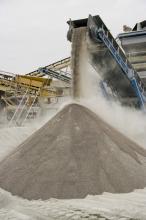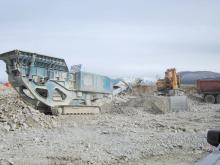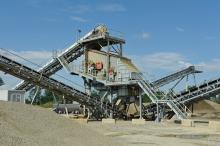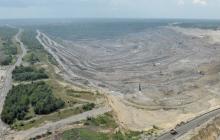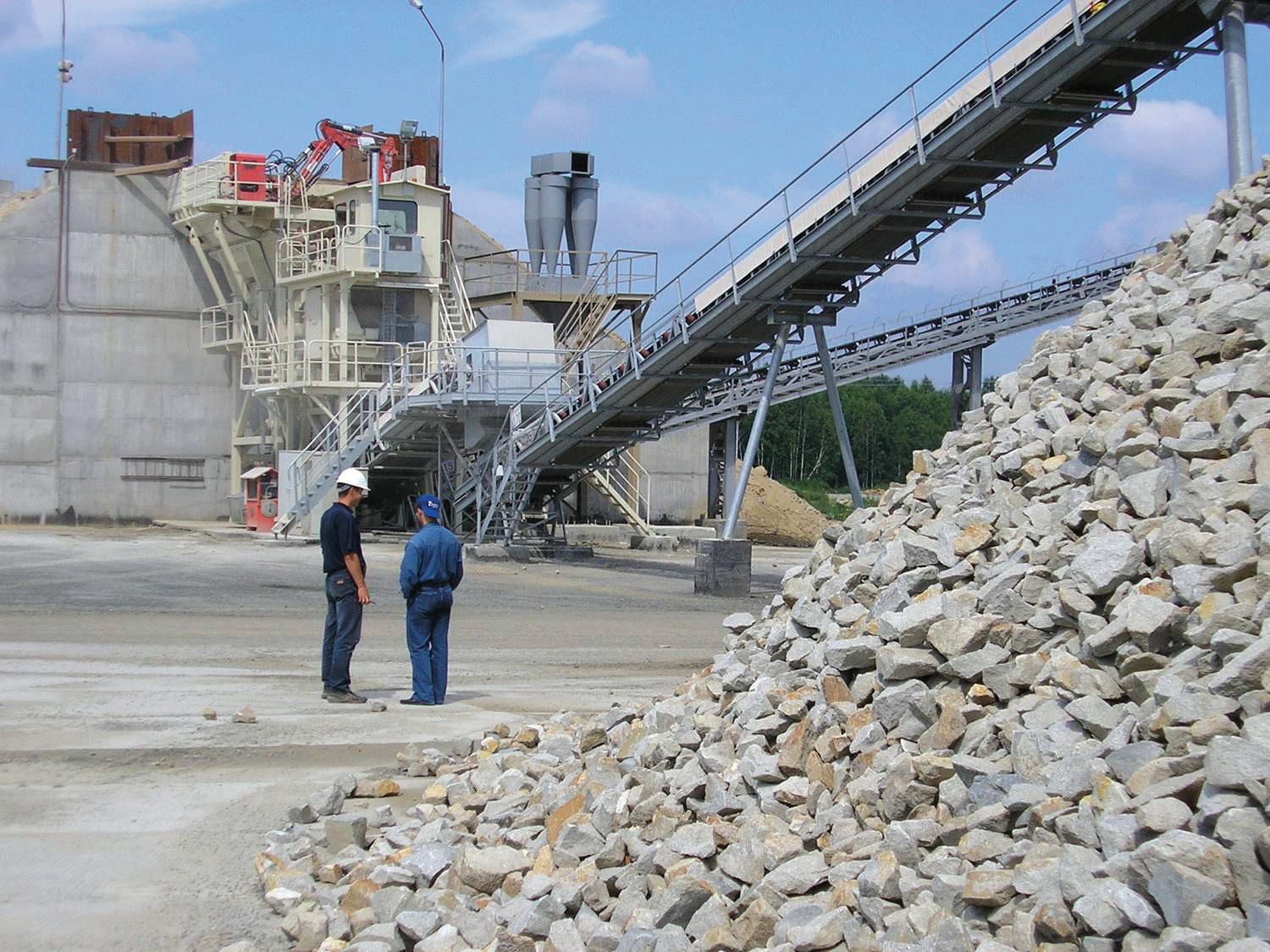
Despite the current financial turmoil, Russia's aggregates market looks set for continued expansion. Heikki Harri reports
During the last decade the production of aggregates and related products has increased many times over in Russia and there is no seeming end to this trend. The country is committed to continuing investment in infrastructure and this means demand for aggregates will continue to grow.
The need for new and better roads, airports, seaports, office and commercial buildings, and houses in Russia is still acute and will stay that way for quite a number of years. The country also has a national plan that includes construction of almost 20,000km of various types of roads between the years 2010 and 2015.
The highway plan includes the construction of new and reconstruction of 2000km of multilane highways and high-speed roads, 8,000km of federal roads and 10,000km of regional roads, all government funded. The government hasalso formulated Russia's transportation strategy until
2030, and the programme of 2010-2015 is the main tool to resolve the problems of the first stage of the implementation of the strategy.
This is good news to the hundreds of private companies and governmental operations that have already benefited from the high demand of aggregates and sand and gravel products that are needed all over Russia, the largest country in the world.
Continuous demand
According to the latest statistics from 2006, the total volume of aggregates production in Russia was approximately 510million tonnes. The figure includes all products made from blasted rock, sand and gravel and building sand. Since those figures were calculated, many new plants have been put into production and more are in the pipeline.
In 2007, a total of 29 new quarries were commissioned with combined production capacity of 8.5million cubic meters. Two largest plants of these are near St Petersburg and in the northwest Kola peninsula near Murmansk. One of the driving forces for the growth in aggregates is the construction activity for the 2014 Winter Olympics, which are to be held in the southern Black Sea town of Sochi. The event has been given the highest possible national priority and will create a lot of need for various kinds of building and construction materials in the coming years. Furthermore, the region in and around Sochi is not able to produce enough materials, so there will also be a need to implement new solutions of logistics.
Over the last few years the role of aggregates production has changed significantly - with higher revenue being derived from the oil producers, the government has started to support infrastructure development more heavily than in the past. Simultaneously, many new enterprises have emerged into construction, civil engineering and quarrying providing real opportunities of expanded businesses and also of good profits.
There is another trend in these industries and that is the penetration of new machinery made in Europe, North America or East Asia. The operating companies want to invest in hi-tech and cost-effective machines, which they cannot source from the local equipment manufacturers.
Regional distribution
The central region around Moscow is the biggest producer of aggregates with approximately 20% of the total output. However, this is not enough to satisfy the demand and therefore a lot of aggregates are transported to the central region. Another factor influencing this import is that the rock in the region is of low quality.
In Russia there are several regions with good quality rock for aggregates production. The Urals region in the east, and the Leningrad (as the area around St Petersburg is still known) and Karelia regions in the northwest are among the best with granite types of rock. Another major source of granite is the Voronezh region in the south. Smaller producing areas are located in Murmansk and Arkhangelsk but both of them are far away in the north and so remote that transporting aggregates is not feasible. Two neighbouring countries, namely Belarus and the Ukraine also provide good aggregates and export them to Russia.
In the past five years, the largest growth in aggregates production has taken place in the Moscow area due to the high demand from the rise in construction work in the area. The biggest growth has been in ballast production, although as stated earlier, the quality is not good enough for some projects.
The growth has been approximately 70%, which also was reached in the Novosibirks region. Percentage-wise the biggest growth in the last five years has been met in the Tyumen region southeast of the Ural mountain range. There the production of ballast grew 36 times and that of sand even more, with 43 times higher production. Tyumen produces almost 40% of all building sand in Russia.
Infrastructure
In Russia, road construction is the largest consumer of aggregates. However, there are currently a lot of other types of infrastructure projects as well and most of them are located all over the European part of the country.
Many of the projects are those involving new and improved seaports. In the Gulf of Finland there are quite a few of them, such as the Luga and Baltiysk ports that will provide railway and automobile ferry connection to various locations, but most importantly to Germany. In the same area there are two existing ports - Vysotsk and Primorsk - that require new and improved access roads. Other new ports for the Gulf of Finland include the Ust-Luga, which is already under construction, and Lomonosov that is the planning stage. Sea passenger service is being improved by building a new terminal at the island Vasilyevsky in St Petersburg. Also Black Sea is getting a new commercial port at cape Zhelezniy Rog.
In the northwest there are railroad projects including the reconstruction of the railroad between St Petersburg and Buslovskaya and the construction of a new railroad between Losev and Kamenogorsk.
Current bridge schemes include a new bridge over the river Volga, which represents the first phase of a new bypass road in the city of Yaroslavl. Another bridge is being built over the Kola Bay near Murmansk, while another project involves a crossing over the river Kama as part of the new highway between Kazan and Orenburg.
Major road projects include a bypass road in Sochi, and further bypass roads in the cities of Krasnokamsk and Perm. The latter projects are parts of the planned highway that will eventually link St Petersburg, Kirov and Perm and ending in Yekaterinburg that is situated east of the Ural mountain range.
Construction industry is one of the fastest growing industries in Russia - it is estimated that between 2000 and 2007 the construction market grew 6.5 times and in 2006 alone the volume of construction increased almost 47% compared to the previous year.
Vital construction
The Russian Federal State Institution of Roads has estimated that 56% of the existing federal motorways have insufficient road surface durability and 37% have unsatisfactory top evenness. Furthermore, the postponed repair of roads will cost the state budget from 2.5 to 3 times more than the cost of the timely performed repair work. Therefore the Russian government has taken active measures to correct the unfavourable formula and has decided to invest heavily to build new roads and to improve the existing ones. Naturally the road projects also have a big impact on the country's financial development.
The programme called 'Roads of Russia' includes 16 major road projects. The top five in terms of monetary investment value between now and 2010 are M-4 linking Moscow, Voronezh, Rostov-on-Don, Krasnodar and Novorossiysk; M-10 linking Moscow, Tver, Novgorod and St Petersburg; the St. Petersburg ring motorway; M-5 (the Ural highway) from Moscow through Ryazan, Penza, Samara and Ufa to Chelyabinsk; M-7 (the Volga highway) from Moscow to Vladimir, Niszniy Novgorod, Kazan and Ufa; and M-1 from Moscow to Belarus.
These projects result in huge volumes of both money and materials going into all sorts of construction projects. It was estimated that in 2008, the volume of construction increased 27% compared to 2007. In the Leningrad region alone the aggregate market grows 10 to 15% every year and this is likely to continue as the production of high quality aggregates is the fastest growing sector.
Another major consumer of aggregates is the railroad network - it is estimated that railroads in Russia needs 8million tonnes of ballast materials annually.Equipment needs
A good example of the new approach to quarrying in Russia is the Monetny quarry located 35 km to the northeast of Yekaterinburg, the hub of the Sverdlovsk district to the east of the Ural mountain range. The quarry owner is the Sverdlovsk district administration and in 2004 operation at the site was revolutionised with the purchase of a complete crushing and screening line from Metso Minerals and leasing of drilling and blasting services from Stella-Market, a Russian privately owned enterprise. Stella-Market purchased Sandvik drills for the operation. Since then the production has increased considerably and it now produces over 700,000million tonnes of materials annually and eight different end products. The granodiorite products are mainly sold to road construction companies and cement producers in the area. The operation had started in 2001 using mostly second-hand Russian equipment but the owner soon found it difficult to meet demand. The quarry's Metso four-stage crushing fleet now inlcudes a C125 jaw crusher for the primary stage, a GP300S cone crusher for the secondary and a GP300 cone crusher for the tertiary stage. In case there is a need for fine material, the quarry also has a Barmac 9100 VSI crusher. Screening is taken care of by CVB2060IV and TS403 screens. Stella-Market is a major customer of Sandvik and is very active in the Sverdlovsk region. At Monetny, Stella-Market is in charge of drilling and blasting and uses a Pantera 1500 and a Titon 500 drilling rigs for the work. Drill holes are bored with a diameter of 127mm and to a depth of 5m and the working hours depend on the customer's orders.
Concrete boom
Aggregates are also in need in the concrete industry. Production of the reinforced concrete is booming partly due to the overall activity in infrastructure construction, but also thanks to the enlarging housing and building markets. From the investment point of view, the reinforced concrete market is therefore the most lucrative.
Large Russian construction companies, such as Vozrozhdeniye, SU-155 and DSK-1, have tended to gear their own production around the needs of projects they are involved in because they want to ensure the quality and consistent supply of materials for their own production sites and not depend on outside sources. For instance, SU-155 acquired recently a concrete plant in St Petersburg and upgraded it to serve its work there.
In spite of this, the reinforced concrete market is local. The big construction companies produce less than 1% of the total volume in Russia, since there are thousands of small local producers as the inheritance from the Soviet Union era.
Rising demand
In spite of what the financial future may hold, the need to upgrade Russia's infrastructure remains acute and will require a lot of aggregates and other materials in the foreseeable future. Today the problem has often been in production bottlenecks and shortages, which has resulted in high prices and made the situation lucrative to professionally managed new companies that have entered the market.
One major reason for new investors to enter the construction and aggregates markets has been a major change in the government policy. In the past - but not so long ago - government and local officials regulated the businesses with stringent licensing and regulation bureaucracy that in many cases resulted in the suspension of the company's activity. Now this period of time is mostly over allowing companies to conduct their businesses in the capitalist way.
The need for investment remains high. Still today, many aggregates producers have problems with quality and cannot meet the growing requirements, particularly when cubicity is concerned. At present, according to an estimate by a Russian technical institute, the demand for cubical products is met only by 30 to 40% of quarries. Consequently, there still is plenty of room for improvements and investments all over the country.

